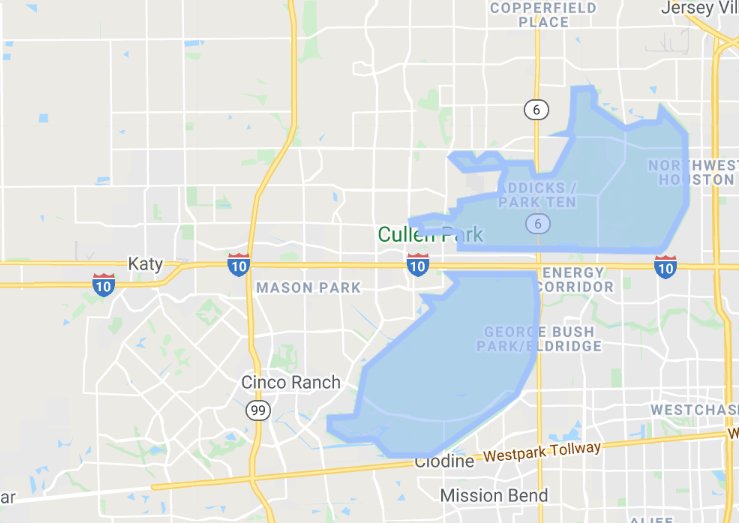Katy area prepares for hurricane season
Progress made, but flood risk remains
The Willow Fork and Fort Bend County drainage districts have been working on several projects since Hurricane Harvey hit the Katy area in 2017 in preparation for the upcoming hurricane season. Several projects have been completed alongside the Harris County Flood Control District, including inspections, repairs and debris removal.
Willowfork Drainage District Director Wendy Duncan said the district’s board of directors was able to pull money from an already existing desilting fund which had around $1.5 million by the time Hurricane Harvey hit. This allowed the drainage district to quickly start cleaning some of the diversion channels.
“During Hurricane Harvey, a lot of material was blown into the diversion channel and it was about four to five feet of silt. It was blocking a lot of the outfalls,” Duncan said. “When it receded in October, we began immediately clearing out those channels and cutting a center channel so that we could get positive flow to drain water out of the neighborhood.”
Duncan said clearing out the silt allowed for many homes to withstand the Halloween storm on Oct. 31, 2017.
Since then, WFDD has been getting reimbursements from the Federal Emergency Management Agency for other projects addressing drainage issues since Harvey, Duncan said. The federal government will pay up to 90% of a project and the Willowfork district pays the remainder.
Discussions of a flood tunnel to further aid in water flows during storms are taking place between the Barker Flood Prevention advocacy group and HCFCD. According to Duncan, who is a co-founder of the advocacy group, the project is already in its second phase of studies. Duncan believes this tunnel can be a viable option, if funded, to aid in alleviating overflowing issues in reservoirs that arise during severe rain events.
“From an engineering perspective, there’s a lot of positive feelings for the flood tunnel, because we would not be the first to have a tunnel that conveyed water, they’re all over the world in multiple parts of the world,” Duncan said. “We wouldn't be the guinea pigs for flood tunnels. This has been done multiple times.”
Duncan said one drawback of the flood tunnel proposal is the cost. Initial estimates for the project neared $2.5 billion but that “oftentimes, first estimates are wrong.”
On the other side of the Barker and Addicks reservoirs is Buffalo Bayou, a natural channel that also helps with redirecting water from the reservoirs. Mark Vogler, chief drainage engineer for the Fort Bend County Drainage District, said the district has also worked on removing the silt from the channel but has yet to finish addressing the erosion along the bayou.
“The silt was removed but as long as the erosion (isn’t) repaired, there’s some continued silt occurring downstream. Erosion will continue to progress upstream until it’s repaired,” Vogler said.
According to Vogler, the project to address the erosion is moving forward in phases. This includes obtaining appropriate permits, protecting the endangered species living in the bayou and then starting work on the site.
HCFCD has also been working on several projects on the Addicks and Barker reservoirs. Current projects in the Addicks Reservoir include sediment removal in the Addicks Bayou and Watershed, as well as excavation for a detention channel. In the Barker Reservoir, the main project addresses sediment removal.
According to the HCFCD website, the five Addicks Reservoir projects’ budget nears $40 million. The Barker reservoir project’s current budget is $25 million.
When it comes to hurricane season preparedness, Vogler said the Buffalo Bayou has been restored to its original design capacity.
“It’s not bigger, it’s not smaller, it’s the capacity it’s designed to have,” Vogler said. “And so, if you get the same storm, you're gonna get the same flood. But again, the majority of people that flooded were not a result of the channel capacity, it was a result of the water backing up from Barker Reservoir, which is totally out of the county’s control.”
Although the area is in better shape to convey water due to repairs and desilting done over the last few years, Duncan said the channels in her drainage district will be in the same condition before Harvey.
“When Hurricane Harvey hit, our manmade channels of our district were in optimal working condition,” Duncan said. “However, despite the excellent system we have, the fact remains that our area can still flood when the gates of the Barker Reservoir are closed and filled beyond government-owned land and in this respect, we really are no better situated than we were before Harvey. And really, the primary takeaway from that information is to buy flood insurance.”
Keywords
Willow Fork Drainage District, Fort Bend County Drainage District, Wendy Duncan, WFDD, Barker, Addicks, Buffalo Bayou, Mark Vogler, drainage








